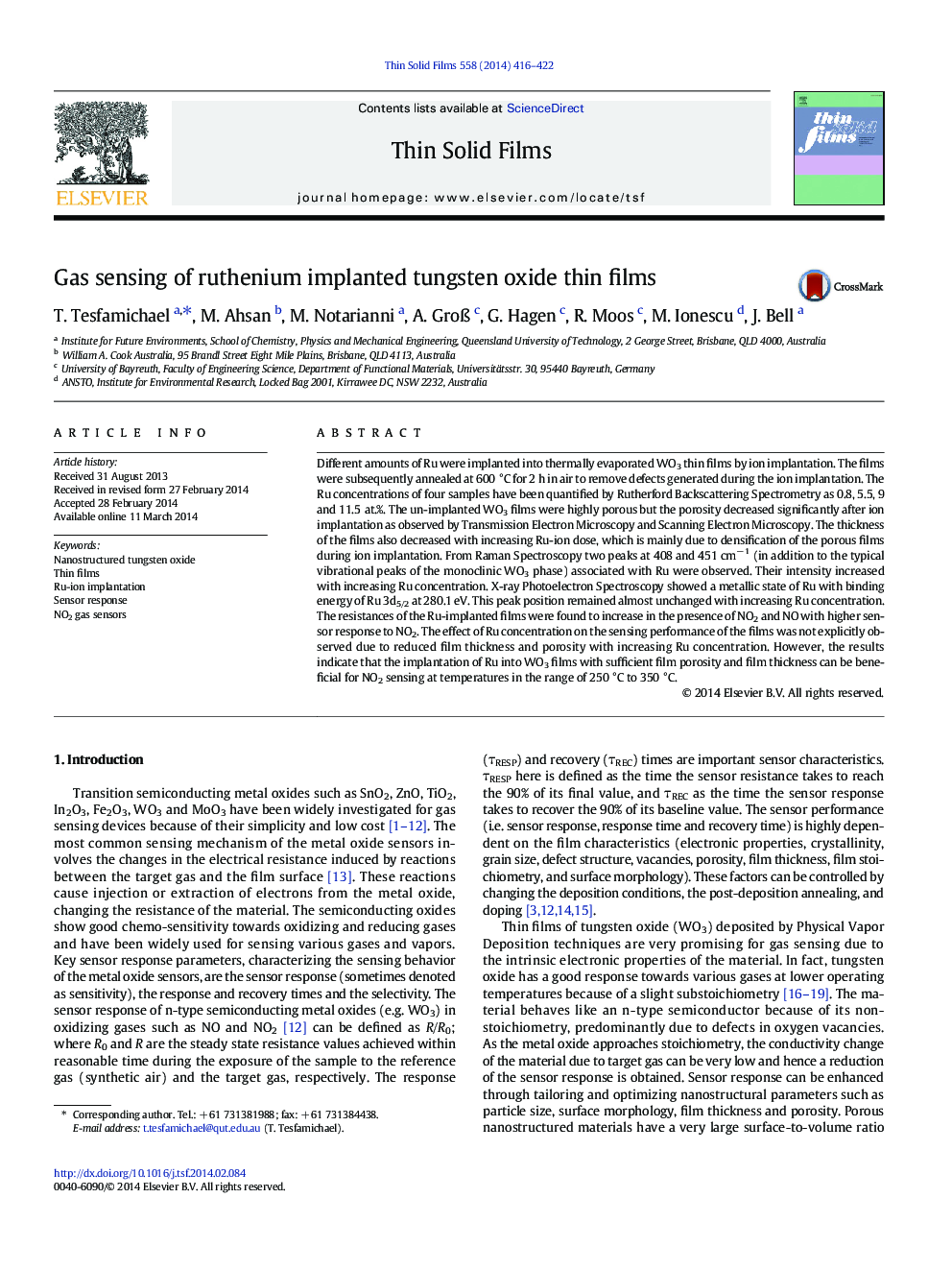| کد مقاله | کد نشریه | سال انتشار | مقاله انگلیسی | نسخه تمام متن |
|---|---|---|---|---|
| 1665486 | 1518046 | 2014 | 7 صفحه PDF | دانلود رایگان |
• Densification of WO3 thin films has occurred after Ru ion implantation.
• Thickness and porosity of the films decrease with increasing Ru ion dose.
• The amount of oxygen vacancies and defects increases with increasing Ru ion dose.
• Ru has shown a crucial role in enhancing sensor response to NO2 gas.
• Implanted films of sufficient porosity and thickness are beneficial in gas sensors.
Different amounts of Ru were implanted into thermally evaporated WO3 thin films by ion implantation. The films were subsequently annealed at 600 °C for 2 h in air to remove defects generated during the ion implantation. The Ru concentrations of four samples have been quantified by Rutherford Backscattering Spectrometry as 0.8, 5.5, 9 and 11.5 at.%. The un-implanted WO3 films were highly porous but the porosity decreased significantly after ion implantation as observed by Transmission Electron Microscopy and Scanning Electron Microscopy. The thickness of the films also decreased with increasing Ru-ion dose, which is mainly due to densification of the porous films during ion implantation. From Raman Spectroscopy two peaks at 408 and 451 cm− 1 (in addition to the typical vibrational peaks of the monoclinic WO3 phase) associated with Ru were observed. Their intensity increased with increasing Ru concentration. X-ray Photoelectron Spectroscopy showed a metallic state of Ru with binding energy of Ru 3d5/2 at 280.1 eV. This peak position remained almost unchanged with increasing Ru concentration. The resistances of the Ru-implanted films were found to increase in the presence of NO2 and NO with higher sensor response to NO2. The effect of Ru concentration on the sensing performance of the films was not explicitly observed due to reduced film thickness and porosity with increasing Ru concentration. However, the results indicate that the implantation of Ru into WO3 films with sufficient film porosity and film thickness can be beneficial for NO2 sensing at temperatures in the range of 250 °C to 350 °C.
Journal: Thin Solid Films - Volume 558, 2 May 2014, Pages 416–422
